The Tunnelbana – Video by Nigel T Heffer | Photography by Mike Ramsay | Music by Code Indigo (with Nigel on Guitar).
Music by Code Indigo. CD Take The Money And Run – Memory Code 4 – featuring Nigel on guitar.
If You Really Want to Feel Like You Live Here
Catch the Tunnelbana Late at Night
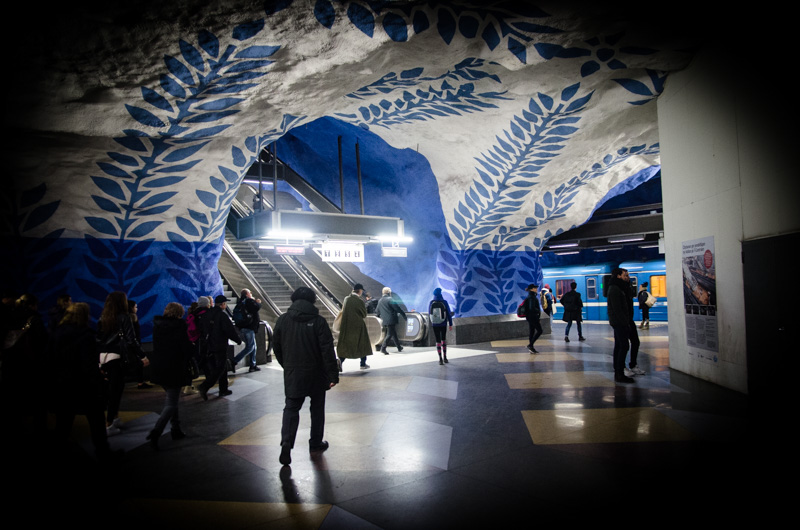
If you genuinely want to feel like you’re living in Stockholm, don’t just stroll through Gamla Stan or enjoy coffee at a cosy, candlelit café. Do something more each day — more genuine, more quietly local: catch the Tunnelbana late at night after an event.
Stockholm’s metro, affectionately called the Tunnelbana, is more than just a way to travel across the city. It serves as a moving museum, a subterranean canvas where artists have transformed bare rock into striking public art. Stations like Kungsträdgården and Stadion are not merely transit points; they are galleries hidden beneath the city, painted with vivid colours and filled with mosaics, sculptures, and murals that turn every journey into a cultural experience.
I’ve carried gear and heavy cases through those tunnels at three in the morning—eyes burning, shoulders aching—and still found myself pausing to look around. That’s the strange magic of the Tunnelbana: even when you’re utterly exhausted, it compels you to notice it.
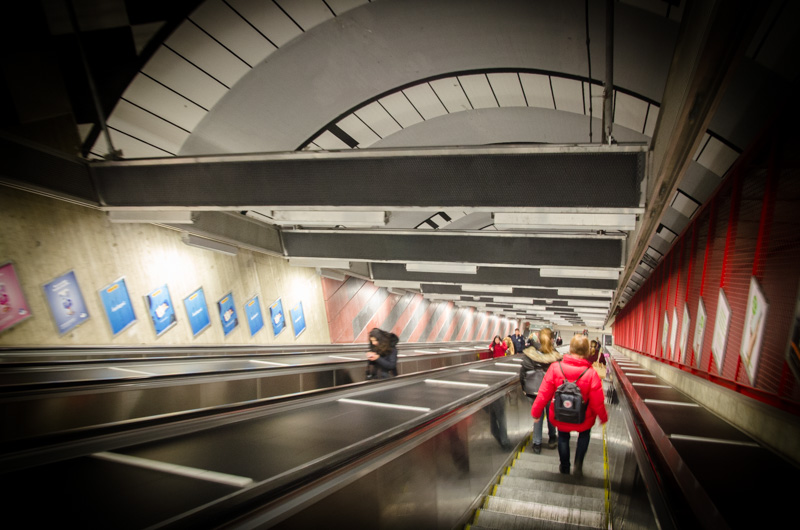
A Gallery Beneath Your Feet
Stockholm’s metro is often referred to as “the world’s longest art gallery,” with over 90 of its 100 stations designed by artists. Instead of covering the raw granite walls with plain tiles, the city celebrated the natural rock, carving the tunnels into cathedral-like spaces and decorating them with sweeping, vivid designs.

Kungsträdgården, near the Royal Palace, feels like stumbling into a forgotten civilisation. The walls are painted in deep greens and reds, resembling an overgrown archaeological site, with fragments of classical columns and statues scattered as if uncovered during an excavation.
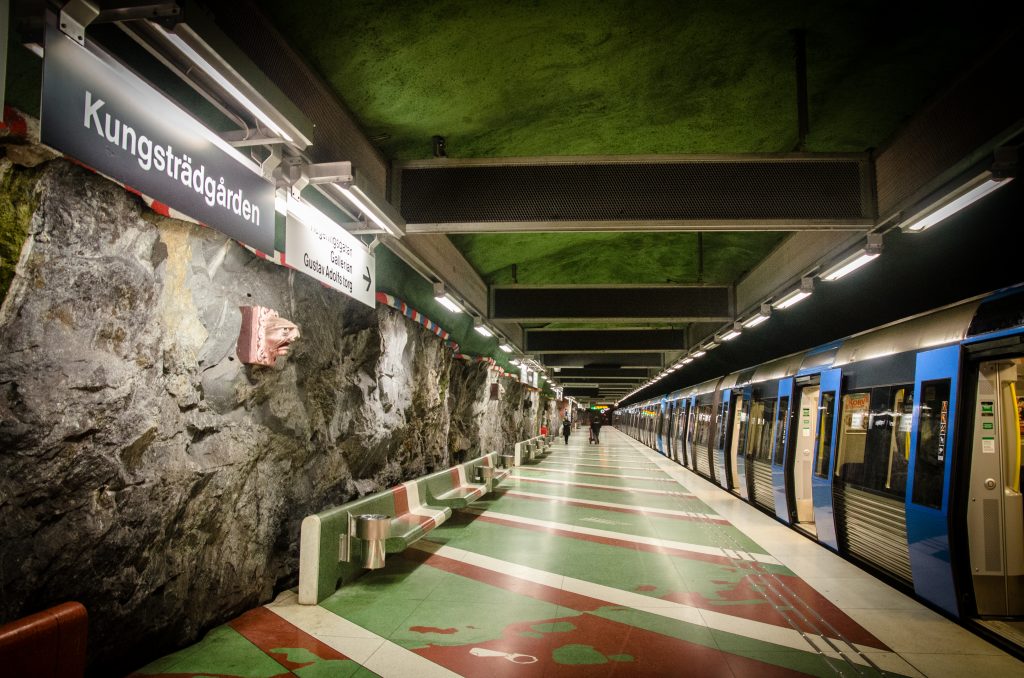
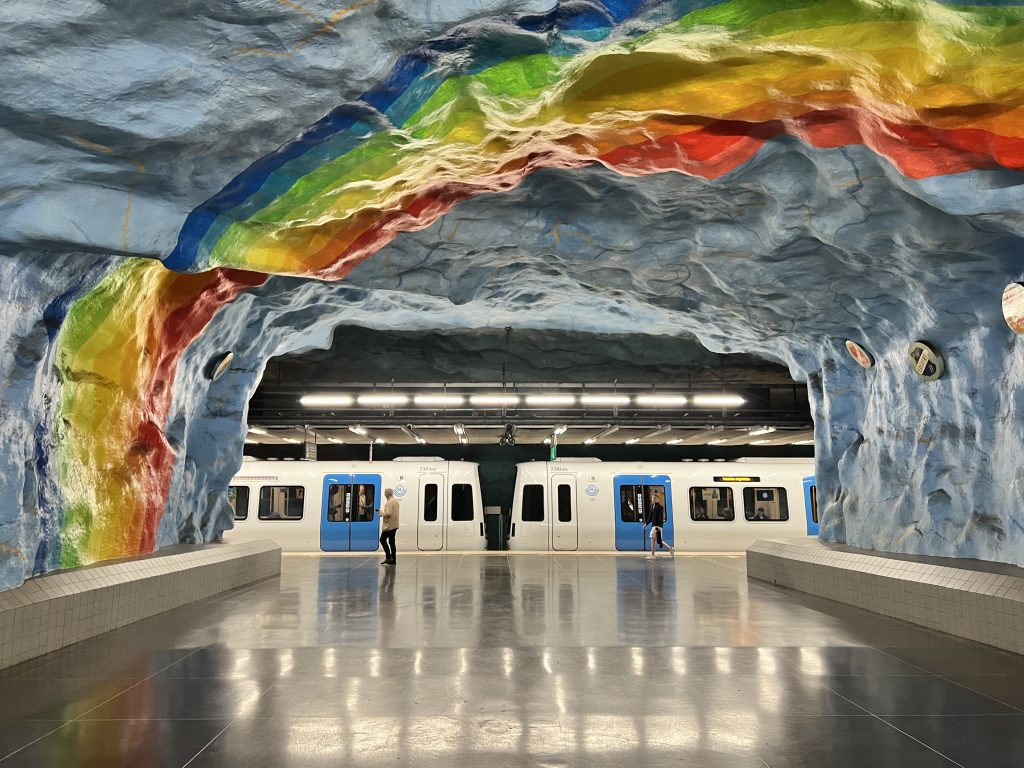
Stadion, one of the most renowned stops, bursts with rainbow arcs stretching across sky-blue walls. Built to commemorate the 1912 Olympic Games, it feels celebratory, almost childlike in its joy, as though the underground itself is cheering you on.
It’s this clash between the mundane and the extraordinary that makes late-night Tunnelbana rides so memorable. You’re simply heading home, but the space insists on being something more.
Wikipedia contributors. (2025, June 5). Stadion metro station. In Wikipedia, The Free Encyclopedia. Retrieved 10:59, October 7, 2025, from https://en.wikipedia.org/w/index.php?title=Stadion_metro_station&oldid=1294109297
Why Late at Night Matters
During the day, stations are busy: commuters rush past murals, tourists stop for photographs, and announcements echo across platforms. You notice the art, but you don’t truly connect with it.
Late at night, it feels different. After a concert, a hockey match, or a long evening with friends, the crowds diminish. You step onto an almost-empty platform, and suddenly the scale of the place hits you. The rock caves seem larger, the murals more intimate, the silence almost theatrical.
The hum of the escalators becomes soothing background music. Your footsteps echo as if you’re in a hall made just for you. That’s when the Tunnelbana shifts from being mere infrastructure to becoming atmosphere—a lived-in part of the city that belongs to you in that quiet, liminal moment.
It’s also a reminder that public spaces in Stockholm are intended not only to support daily life but also to enhance it. The aim isn’t to rush through but to linger, to look, and to allow the environment to influence your mood.
The Commuter’s Art Museum
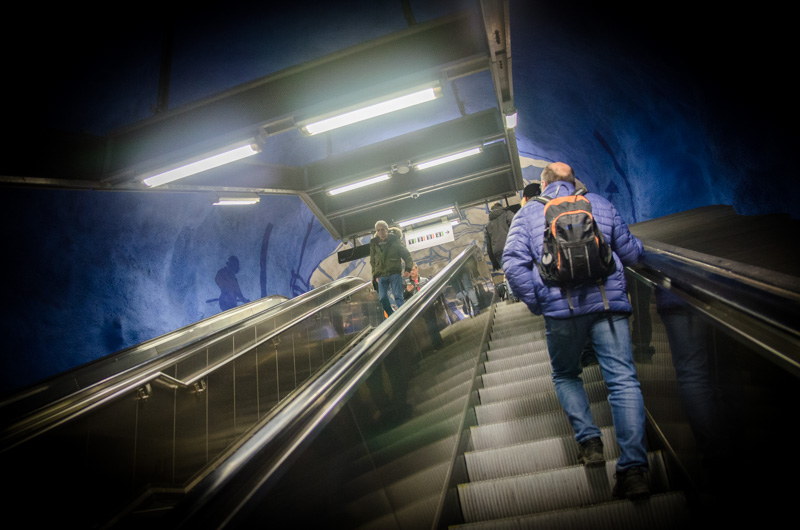
The idea of the Tunnelbana art programme began in the 1950s. City officials aimed to make art accessible to all, not just those able to visit museums. By embedding artworks into stations, they democratised culture, turning journeys into moments of artistic encounter.
Some artworks are playful—colourful mosaics of animals or abstract geometric murals. Others carry political messages, reflecting Sweden’s history of social movements and its commitment to environmentalism and equality. Many stations feel like time capsules, capturing the spirit of the decades during which they were constructed.
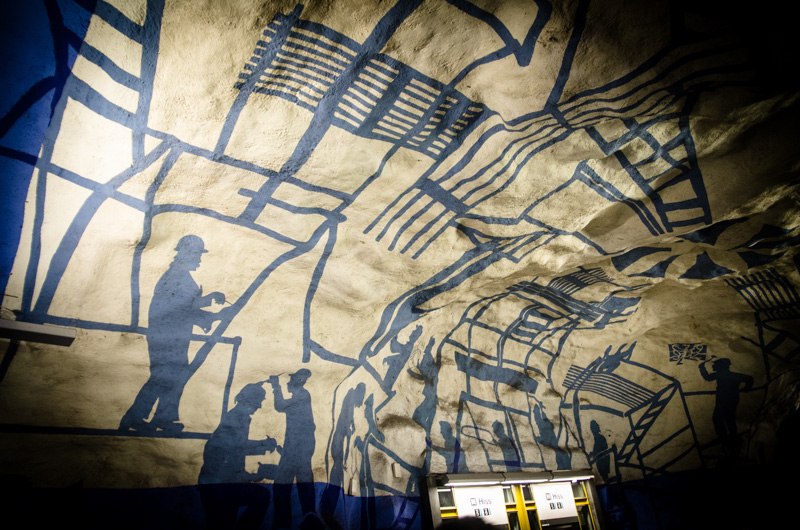
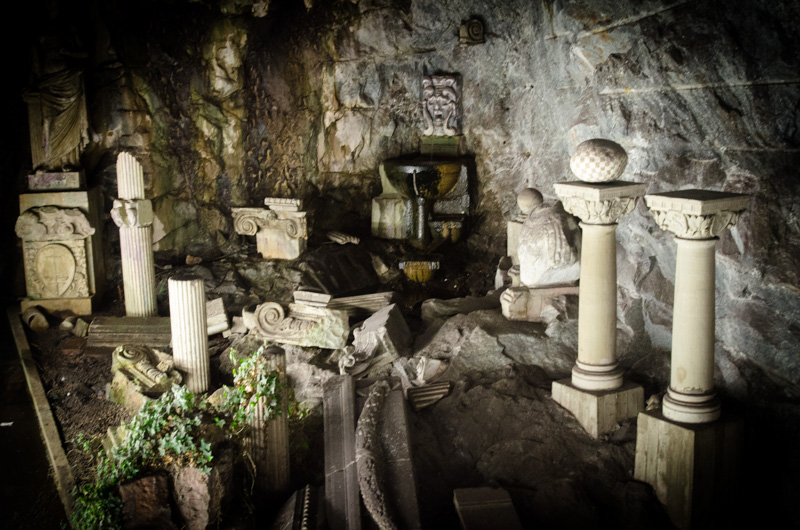
For locals, this art becomes a subtle part of everyday life. For visitors, it’s breathtaking. And for those who straddle both—expats, long-term students, temporary workers—it can serve as a bridge, a way to see and experience the city beyond surface appearances.
Personal Encounters in the Underground
I remember one night, dragging an instrument case after a late rehearsal. It was the kind of exhaustion where your body is on autopilot and your mind is foggy. I descended into Kungsträdgården expecting nothing more than fluorescent lighting and linoleum. Instead, I found myself in a cavern that glowed a greenish hue, with walls resembling moss-covered ruins.
Despite the weight on my shoulders, I paused. I looked around. The station felt alive, breathing history and imagination into the stale air of the early morning.
That’s the paradox of the Tunnelbana: it’s built for movement, yet it compels you to pause. Even when you are in a rush or utterly exhausted, the art demands recognition.
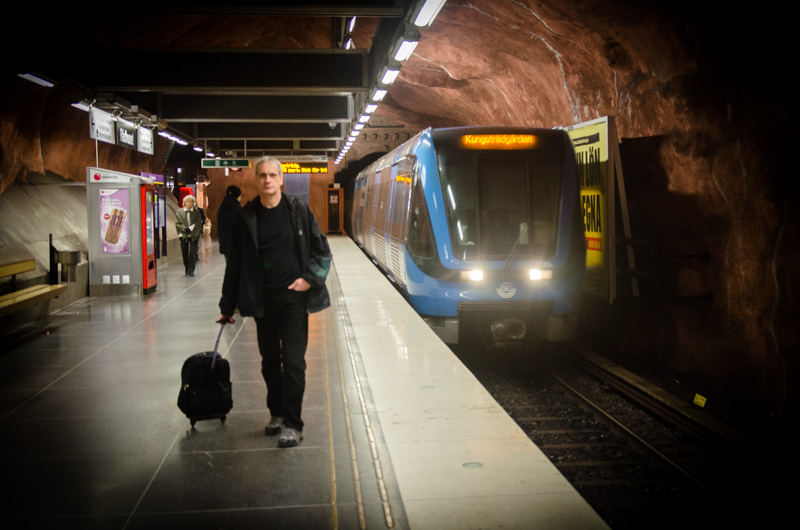
More Than Transit, It’s a City’s Identity
Stockholm is a city that effortlessly combines modern efficiency with a deep respect for design and culture. The Tunnelbana exemplifies this perfectly. It’s clean, punctual, and reliable—everything you’d expect from Scandinavian infrastructure. Yet, it’s also whimsical, artistic, and reflective.
It shows you that beauty exists everywhere: not only in museums, palaces, or galleries, but also underground, in the places you least expect. To ride the Tunnelbana is to experience a key part of the city’s philosophy: that everyday life should be elevated, that public spaces should inspire. Art is not just an accessory, but a necessity.
Why It Feels Like Living Here
Tourists, naturally, will visit the Tunnelbana. Guides will tell them which stations to photograph, and they’ll descend with cameras ready. But for locals, it’s different. You don’t ride it to see art — you ride it to get home. The art simply exists there, woven into the rhythm of your life.
Catching the Tunnelbana late at night after an event—when you’re tired and not in “tourist mode”—is when you start to feel it in your bones. You’re not just observing Stockholm; you’re inhabiting it. You’re part of the flow, sharing the same routes as students, workers, musicians, technicians, and nurses, all moving through these painted caverns together.
That’s what “living here” feels like: not the big attractions or the curated experiences, but the everyday rituals filled with quiet beauty.
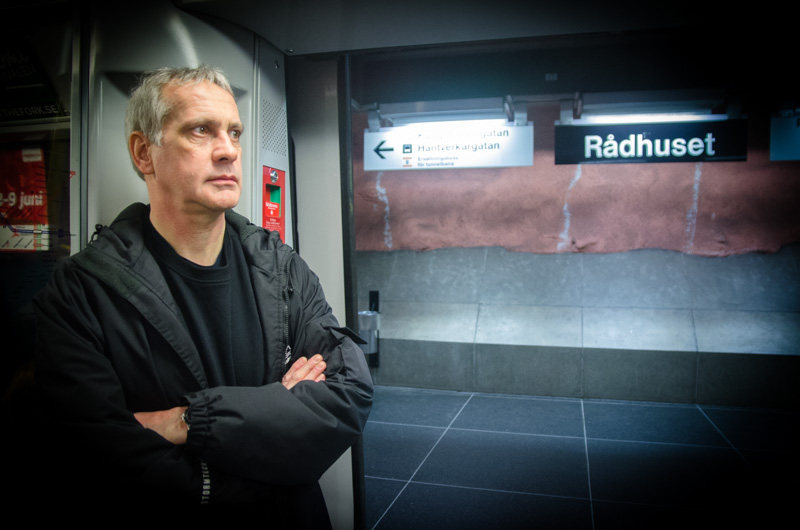
Final Thoughts
The next time you’re in Stockholm, don’t just visit the Tunnelbana as a sightseeing spot. Make it part of your evening. Use it after the concert ends, after music fans have gone home, after the last glass of wine with friends. Step into its expansive, painted halls when they’re nearly empty, when the city above is asleep.
Notice how the walls shimmer in vivid colours. Notice how, even at 3 a.m., tired and heavy-footed, you still pause. Notice how this is the moment the city ceases to be a postcard and begins to be yours.
Because if you genuinely want to feel like you belong here, all you need to do is catch the Tunnelbana late at night.
Read More about – An Insider’s Guide: Personal tips and hidden gems discovered while working in my favourite cities.
https://nigeltheffer.com/category/cities


Leave a Reply